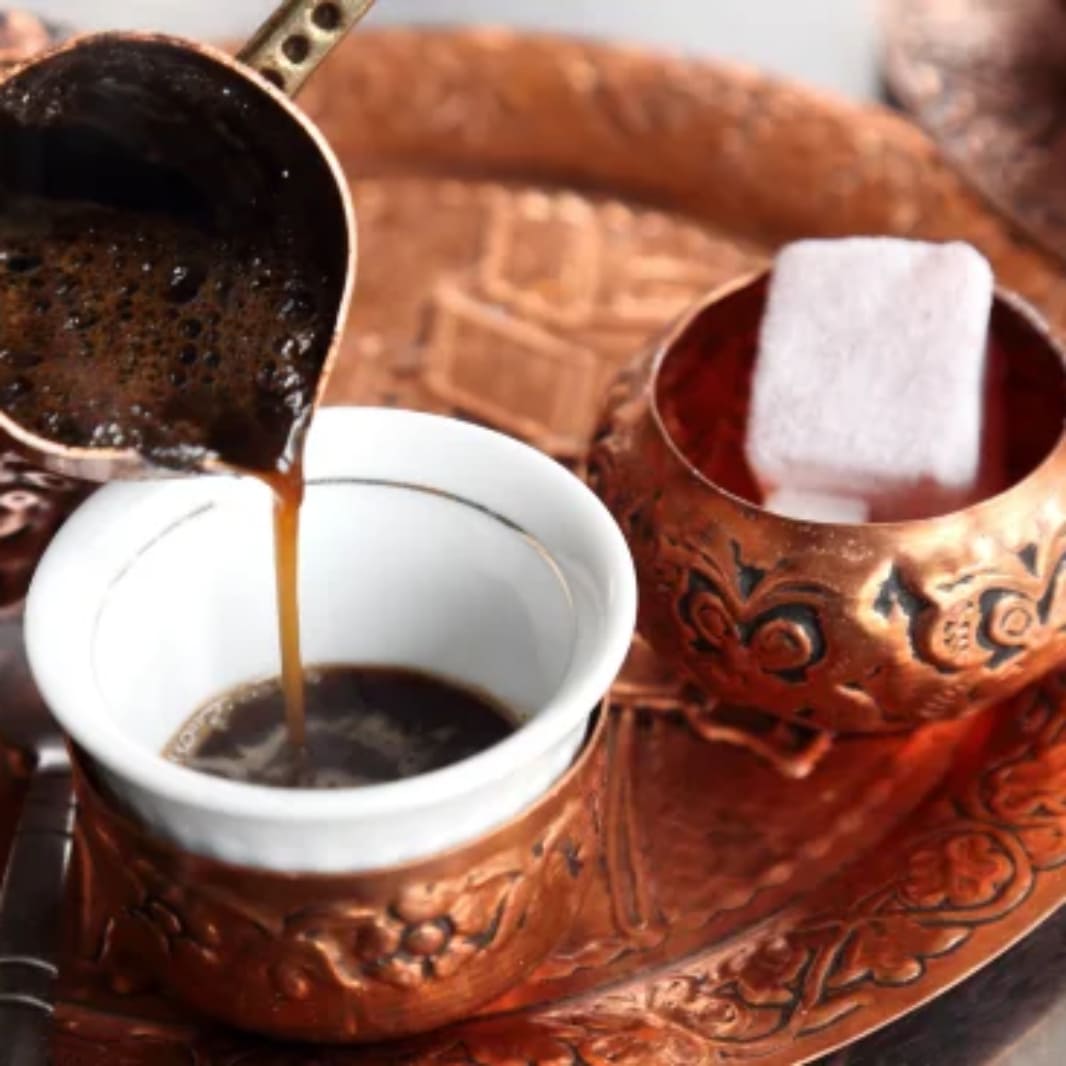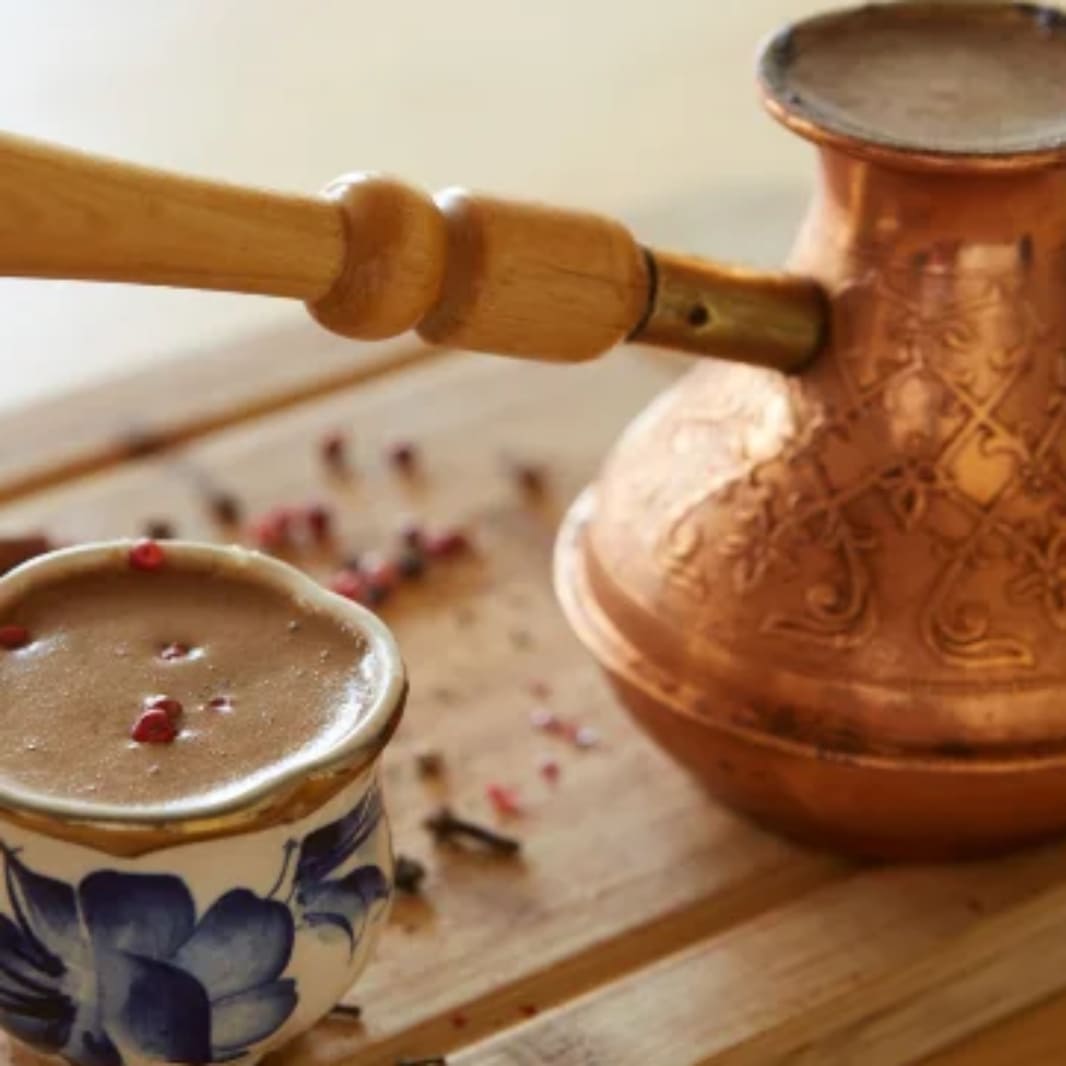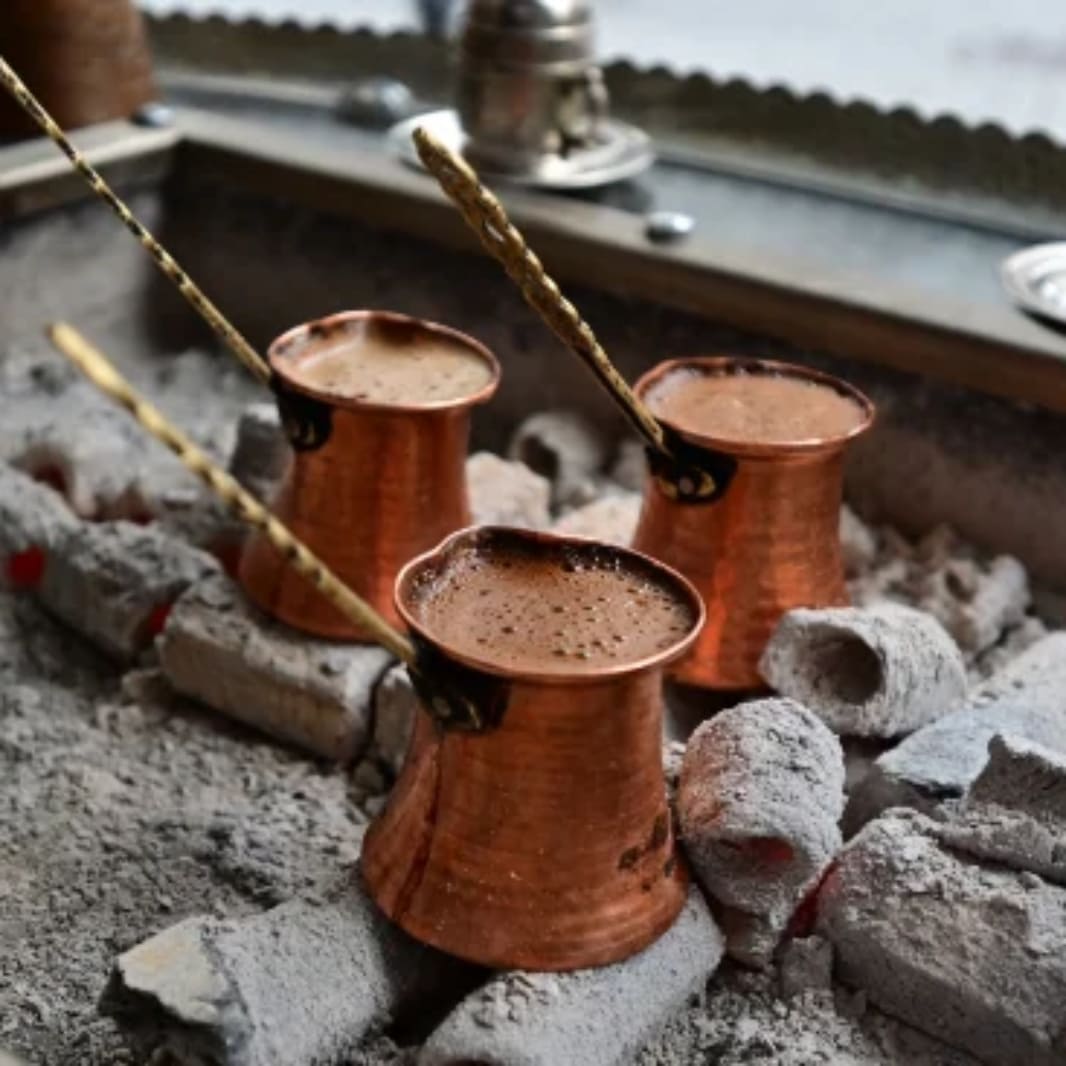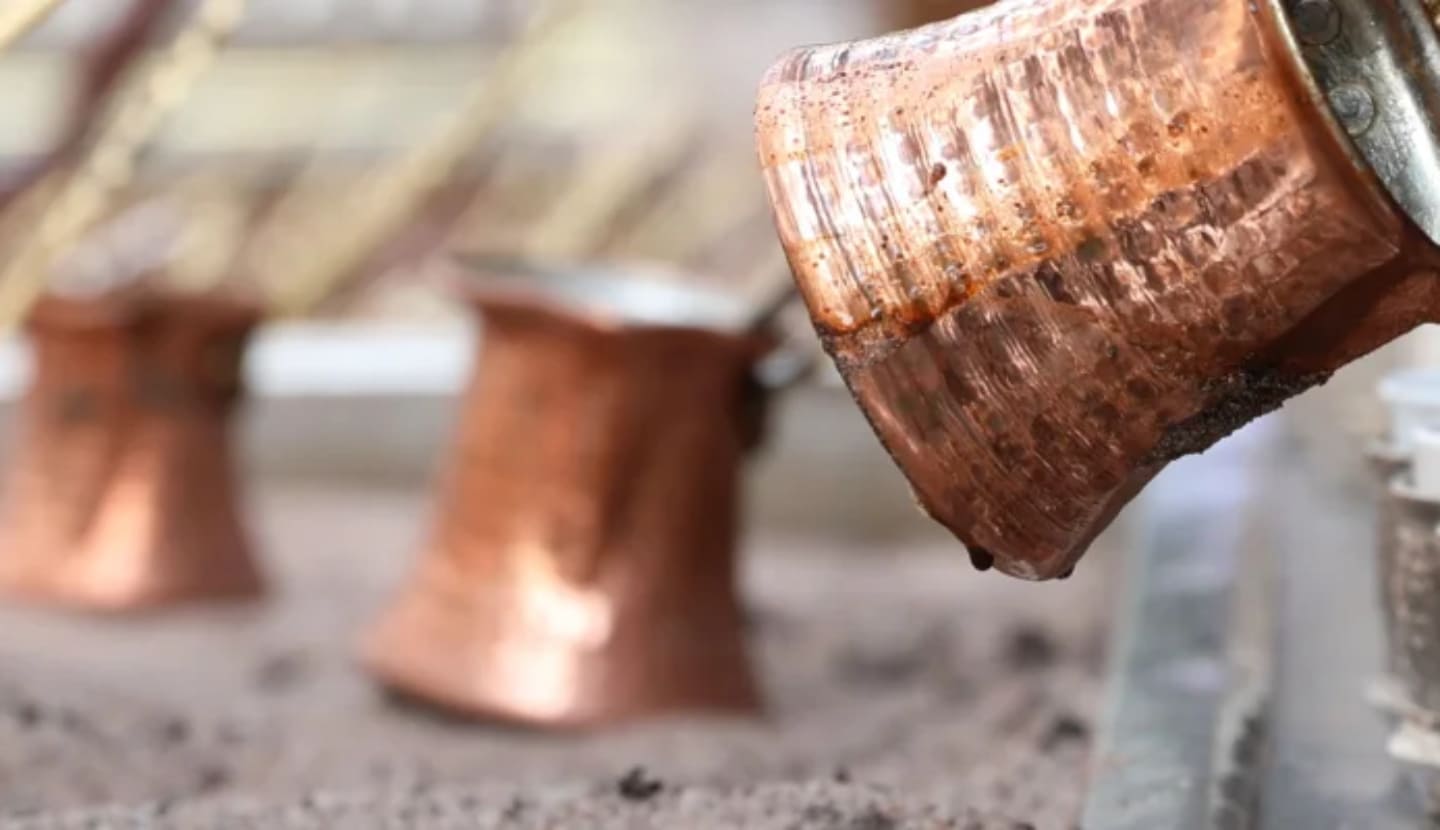What is Turkish coffee?
Typically, Turkish coffee comes from the Arabica bean – but it’s so much more than that. The true meaning of Turkish coffee comes from the unusual method of creating the beverage.
To start, the beans need to be ground to a fine powder with either a pestle and mortar or more traditionally, a Turkish coffee grinder.
Then, the beans get added to a copper pot known as a ‘cezve’ which contains cold, filtered water, if sugar is wanted, then this will get added at this stage too (sugar is never added afterwards as it will disturb the grounds at the bottom of the cup).
Once these steps are complete, the pot gets put on a medium heat until it simmers and the liquid starts to foam, once this has happened, it gets taken off the heat and stirred. The cezve will then be added back onto the heat and this step will be repeated a few times until the liquid is thick in the traditional Turkish coffee way.
When the brew is finished, the pot will be left to cool for a minute, allowing the grounds to fall to the bottom.
Serving Turkish coffee
Traditionally, Turkish coffee is served in demitasse cups, pouring carefully so as to avoid too many grounds. Despite the small cups it gets served in, it may surprise you to learn that you don’t actually drink it like an espresso, and if you do, it’s likely you’ll gulp down far too many coffee grounds in the process. Turkish coffee is made for savouring and chatting with friends old and new, and it’s customary to take up to an hour drinking it, allowing the conversation to flow in between small, delicate sips.
You can usually expect a glass of water and sometimes a sweet such as a Turkish delight to be served with the coffee too, in order to counteract the strong and intense taste.
Turkish coffee can tell your future
If you thought that the grounds located in the bottom of the cup are there just to be thrown away, you’d be wrong. Just like tea leaves, the grounds are actually used to tell fortunes. In fact, this is so widely practiced in Turkey that there are now apps available where you can take a photo of the bottom of your cup and send it a fortune teller for analysis.
History of Turkish coffee
The roots of Turkish coffee trace all the way back to 1555, when it was brought to Istanbul by Syrian traders. Then, by the mid-17th century, it became an essential part of the Ottoman Court’s ceremonies and the Sultan would be served ceremonious coffee by his own personal coffee makers.
Certain historical coffee rituals also became a part of marriage, where women would receive training on brewing Turkish coffee and potential suitors would judge her depending on how well she could make the traditional beverage. Interestingly, in today’s world, elements of this custom still remain and its customary when a woman’s hand in marriage is asked for, for the bride to be to prepare and serve coffee for her family and potential husband. The story goes that if she brews it properly, she’s ready to be married.
Coffeehouses came to Turkey around five centuries ago, beginning in the Tahtakale neighbourhood. These places began as social gathering spots, strictly for men, with women typically enjoying the drink at home. The coffeehouses of Turkey were also an important part of preserving the country’s oral history, as they were places of storytelling and folklore during the Ottoman Empire.
If the history of Turkish coffee has fascinated you, why not explore the general history of coffee?
Types of Turkish coffee
All Turkish coffee is prepared in a ‘cezve’ and with the same method that’s been practiced for centuries. However, there are some slight variations on the beverage, the most common Turkish coffee types being:
What is it?
Menengiç coffee
Menengiç coffee is not made from coffee beans at all, but rather the beans of the Pistacia terebinthus tree. As such, this beverage contains no caffeine, but a much fruitier flavour that many people enjoy. Menengiç is prepared in the traditional Turkish way.

What is it?
Dibek coffee
Referred to as ‘stone ground’ as it’s made with a stone pestle in stone mortar, Dibek coffee is a lighter variant of Turkish coffee in both taste and colouring. Additionally, it’s also said to be thicker with a creamier taste, so it’s a better option for those who want a less intense cup.

What is it?
Mirra
Mirra literally translates to ‘bitter’, which is apt because of its strong and intense taste. The beans are roasted twice and not as finely ground, giving it a much more bitter flavour and because of this, cardamom and other spices tend to be added to make it more well-rounded.

What is it?
On sand/coals/ashes
Not a coffee type as such, but Turkish coffee can be cooked in three different ways, on sand, on coals or on ashes with each offering a slightly different taste. The most traditional option is sand and most homes simply cook it on a stove top.

That’s our guide to Turkish coffee and the culture that goes with it! Want to find out more about the coffee hotspots of the world? Read our guide on Jamaican coffee and learn about the spiritual home of coffee, next.
Today’s community favourites




